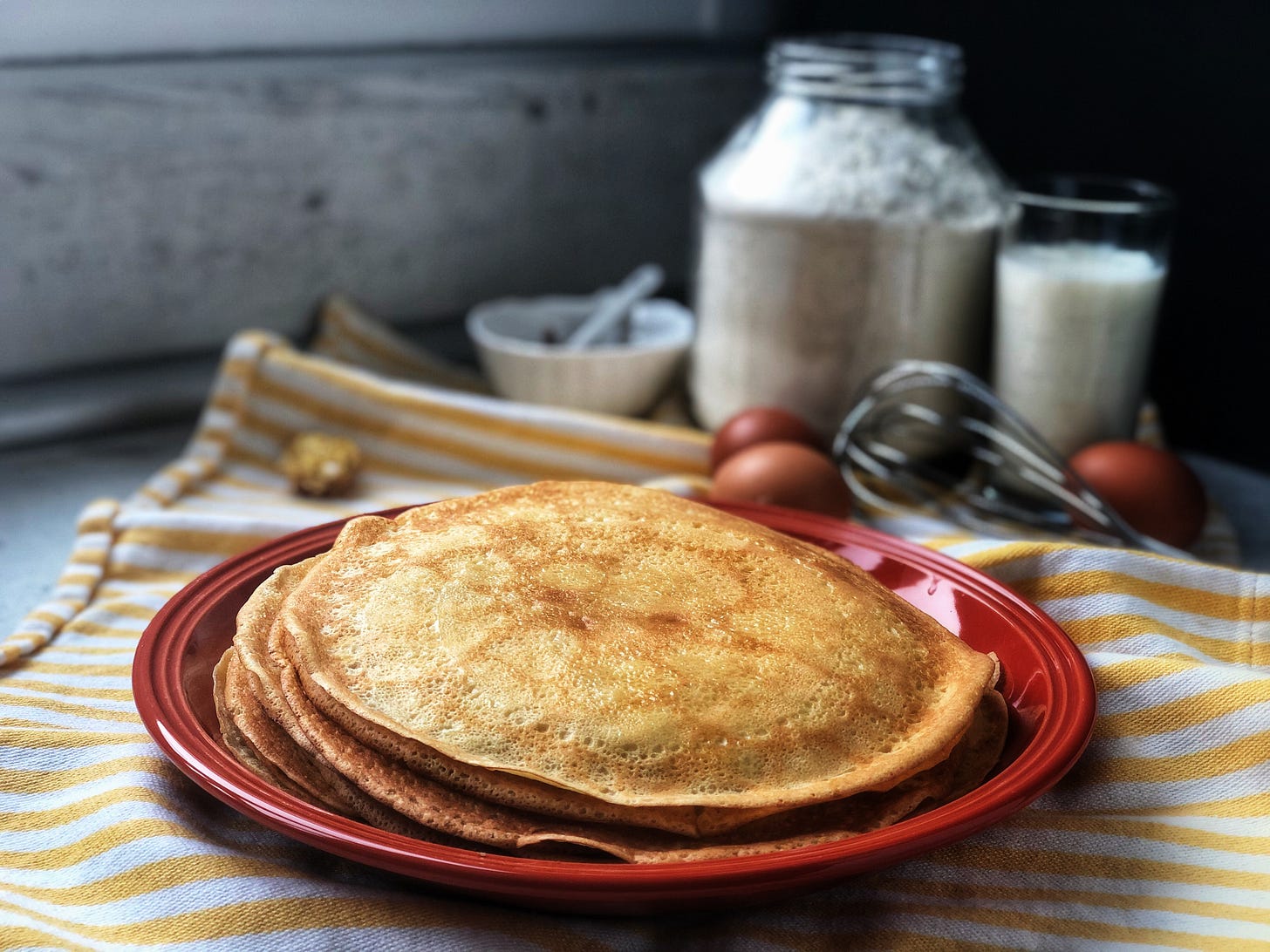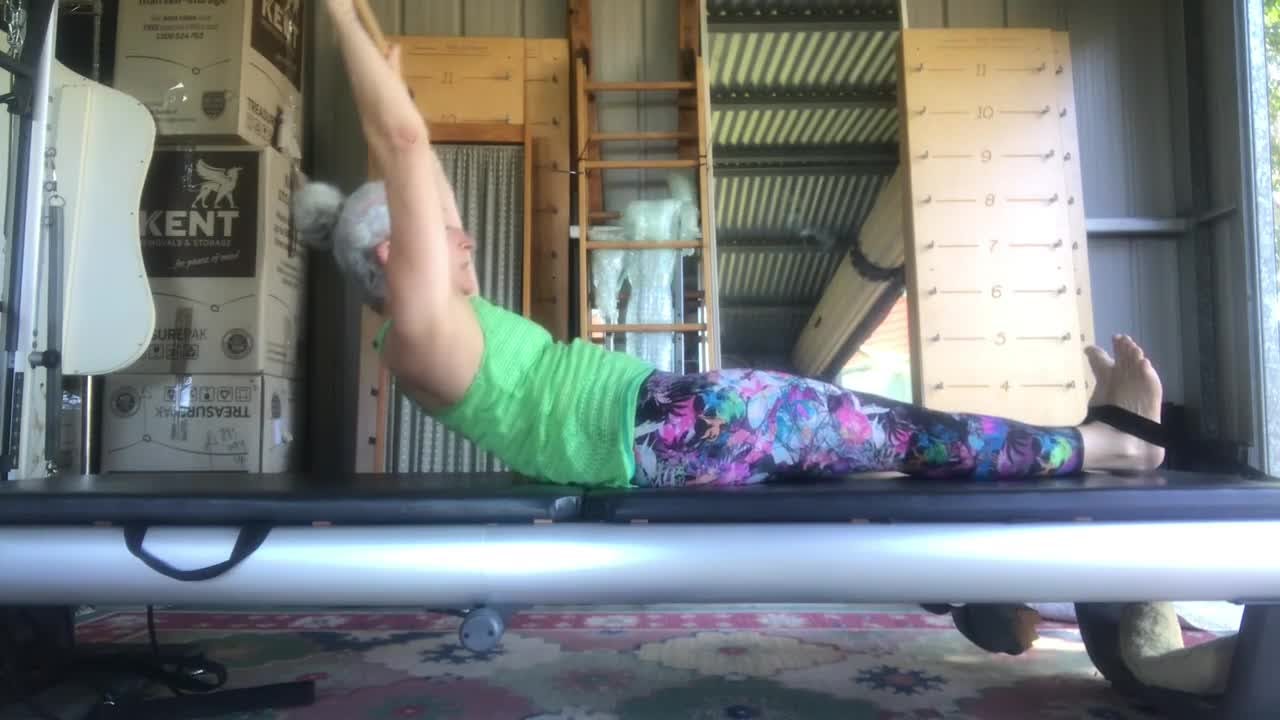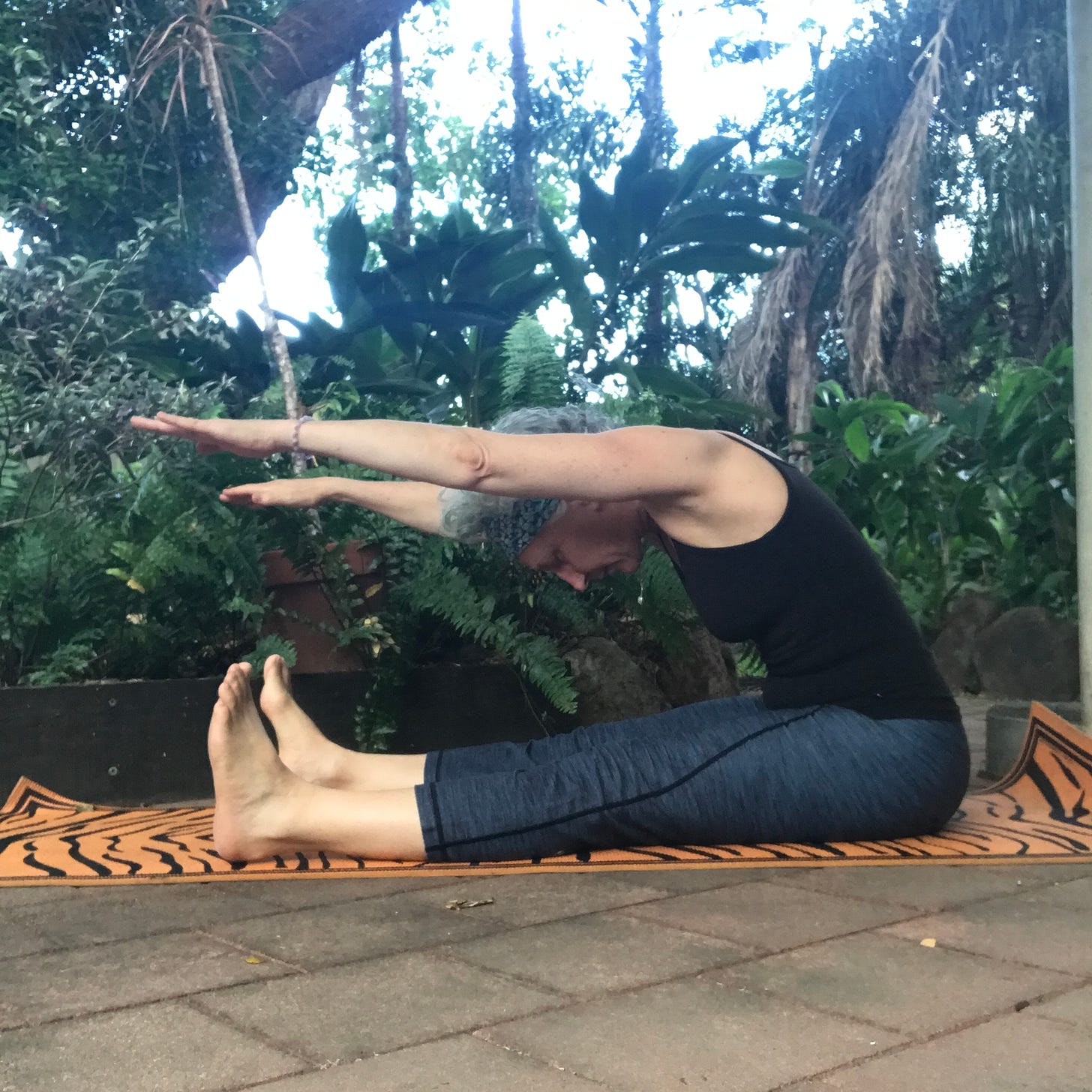Pilates Exercise Dive: Rollup
Number two of Joseph Pilates’ 34 original mat exercises. So much information plus a video tutorial!
Video tutorial, including tonnes of variations, is all the way down at the bottom of the post
A Deep Dive on ROLL UP
I put ROLL UP in the SIMPLE but HARD basket of Pilates Exercises - how bout you?
Do you find it easy to do or is it one you think you’ll never, ever master??
We’re going to be talking about the WHY of ROLL UP as well as the HOW of ROLL UP - aren’t you excited?
If you struggle at all with this exercise (and even if it’s relatively easy for you) keep reading for my reasons why I think it’s such a fabulous one. I’ll also share tips and options on how to make ROLL UP more doable, and why you might be struggling in the first place.
ROLL UP - Philosophically WHY
ROLL UP is the second exercise in Joseph Pilates’ original sequence of 34 and holy heck, I often ask myself, “JP, what were you thinking?’ (like I also ask about his third exercise, Rollover)
I mean this exercise is not only hard on its own, it’s so hard to do smack dab after THE HUNDRED.
Truthfully I never feel completely ready and back when I was doing an advanced Pilates class every week I’d have to do a pre-warm up (especially for my hamstrings) before class even started.

I often tell clients to think of the first ROLL UP as the first pancake that you cook - make it and then throw it away.
am I the only one that never does that but just eats it while standing over the stove?
We’ll get back to pancakes but first here’s a quick reminder of what ROLL UP is:
It’s as it sounds, you roll your body up off the mat until your torso is over your legs. i.e.: start by lying on your back with your legs straight down underneath you, then roll your spine up sequentially starting with your head, shoulders, ribs, waist, and pelvis until your head is reaching for your knee caps and your arms are reaching forward (dang these exercises are hard to put into words)
So the choreography of the exercise is straightforward & simple but remember, that doesn’t mean the exercise is easy to perform (although one of your goals is to find ease while you do it)
Now to the pancake analogy and how it applies to ROLL UP
Here’s how I see it,
The first pancake tells you:
whether or not the pan is hot enough
if you have the right amount of butter to cook with
if the batter’s the right consistency
how much time to wait before you flip the pancake
etc. etc. etc.
You are gathering information to make the rest of the pancakes super tasty.
In the first repetition of ROLL UP you also have a whole bunch of information coming your way.
Among other things, you might be looking at:
where you’re tight
how you’re breathing
where to focus that breath
if you’re pulling more strongly from one side than the other.
And, I think most importantly, listen to how you’re talking to yourself about all of the above.
Make sure what you’re saying is kind!
So, here is where I forgive JP for his sequencing
Because ROLL UP is at the beginning of class you’ll have all that info about where to put your attention as class continues. Notice how your internal sensations change over the five to eight repetitions that you perform before you move on to the next exercise.
ROLL UP can keep you present and in the moment, reminding you that each time you lie down on your mat your body is never as it’s ever been before.
Don’t forget that Joseph Pilates said,
“Contrology is the complete coordination of body, mind, and spirit”
ROLL UP - Physically WHY
Why is ROLL UP physically right after THE HUNDRED and what specific physical skills does it ask of us?
Here are my thoughts:
THE HUNDRED is a relatively static exercise and since Pilates is all about finding strength throughout a movement, not just in a position that we can hold, then ROLL UP is the first chance we get to put that in play.
If THE HUNDRED teaches us:
how to hold up the weight of the upper body from the upper abs and deep flexors of the neck.
how to find the power of the pelvis and deep core muscles to hold up the weight of the legs.
how the arms connect into the shoulder girdle.
how the breath can begin to support the exercise.
Then ROLL UP:
helps us figure out how to lift past the Hundred curl and find our strength further down the torso.
informs us where our spine is stiff.
trains us to use our awareness of pelvic strength and leg reach garnered from The Hundred as anchors to help achieve the exercise.
hopefully teaches us to keep the shoulder blades on the rib cage as we move the spine, so the shoulders stay soft and away from the ears.
only moves through one plane of motion (the sagittal plane) allowing us to gradually organise and integrate our bodies in space before we move on to more complicated exercises, i.e. Saw.
tells us where our breath might be stuck. (try humming as you perform your ROLL UP and it will be clear) and how fully breathing can assist in the lift of the body.
tells us where our strength gaps exist inside the movement and how repeating the movements mindfully can help us to fill in those gaps.
definitely lets us start to figure out how using oppositional energy and the two way stretch makes performing the exercises easier.
ROLL UP: HOW
Again, a reminder of the skills we carry over from THE HUNDRED to help accomplish the ROLL UP…
In THE HUNDRED we pick the head and chest up on to the tips of the shoulder blades, bending at the bottom of the breast bone into THE HUNDRED CURL.
In ROLL UP we have to get past that point and lift higher and find strength throughout a movement, not just in a position. We have to be able to take the weight of the upper body and continue to pick it up off the mat without pushing or hoicking (yes, it’s a word, I looked it up*) from our back. (don’t get me wrong the back does work but in a beautiful spooning relationship with the abdominal wall)
In THE HUNDRED we figure out how to connect the weight of the legs into the strength of the hips while holding them up off the floor. We reach them long and away from us using the two way stretch.
In ROLL UP we have to keep that connection and leg length, and decompress the hip joint without tucking the pelvis, all while keeping the legs firmly glued to our mat. Spoiler alert - this is easier said than done.
Why ROLL UP can be challenging and might be close to the bottom of your list of favourite exercises
having a tight and/or stiff spine - upper, middle, lower back - take your pick
tight hamstrings
tight hip flexors
Are you sensing a theme???
Here are some more reasons why ROLL UP can be challenging
a long(ish) torso
hyperextended legs (yes, really)
not being connected to your UnderBum, which is your hamstring glute line
your arms not being in the optimum position
Yikes, how do we even accomplish the dang ROLL UP?
I'd like to offer you a few ideas:
Don’t ask your abs to do allll the work. Pilates exercises are full bodied movements so pick up your spine (but please - no hoicking!*)
Anchor your legs to the mat pushing them down and away and turn on your UnderBum no matter how elusive or subtle it feels.
Pull your hipbone away from your thigh bone on the way down AND on the way up.
Once your arms get from overhead to shoulder height keep them there as you roll up, it will help prevent the compression of your ribcage (more detail on the video).
Use your exhale to find lift and loft - make sure to breathe fully!!!!!
Use a prop. Props are your friends! (they're the focus of the video so check it out!) They allow your body more access into the exercise like a key to a locked door.
Don’t forget it’s called a Pilates practice, repetition is your friend.
Be willing to do it badly until you figure some things out - keep on trying!
* The History of HOICK:
Etymologists suspect that hoick is an alteration of the verb hike, which is itself akin to hitch.
According to the evidence, hike entered the language during the first decade of the 19th century, whereas hoick appeared near that century's close.
The word hoick can be used for any type of abrupt pulling movement but is commonly used for the sudden pulling back on the joystick of an airplane; a rough, jerky movement when rowing; and a jerky, elevated shot in cricket.
In fox hunting, the word hoicks is used to call attention to a hound that has picked up the scent and to bring the pack together.
I hope that this dive into the WHY & HOW of ROLL UP has helped you think about the exercise in a different way.
Don’t forget the Roll Up video tutorial is below the Joe quote.
As always, I am surprised that when I go to write, how much juiciness is inside just one simple (but not easy) exercise! Gosh I love the Pilates Method!
Thanks for reading.
Be Well,
xBec
The information contained above is provided for information purposes only. The contents of this blog are not intended to amount to advice and Rebecca Forde disclaims all liability and responsibility arising from any reliance placed on any of the contents of this post







